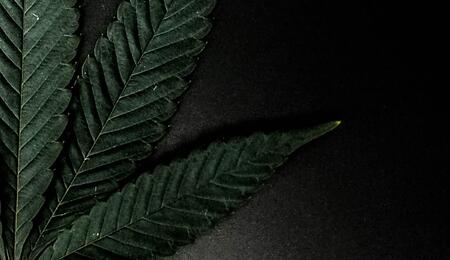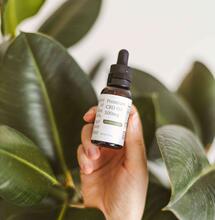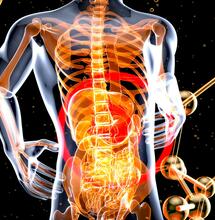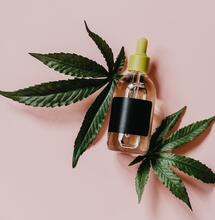Water Basics - soft water, hard water

Water is a part of humans and all living things. Water moves the fluids that support life in plants and animals.
Water (H2O) exists in liquid, gaseous, and solid states. When pure, water is tasteless and odorless. Reflected light often gives it a blue appearance, especially when concentrated in glaciers. Many substances, including fertilizer salts, readily dissolve in water, which is known as the universal solvent. Most sources of water are rarely pure. The impurities in water are “invisible” once dissolved and part of the solution.
Determine basic water quality by measuring its alkalinity, pH, and total dissolved solids (TDS). Alkalinity, the capacity to neutralize or buffer an acid solution, affects pH, the acid-to-alkaline balance of water. Two minerals or dissolved solids, calcium (Ca) and magnesium (Mg), buffer pH so that the addition of acidic mineral salts or fertilizers does not affect the pH a great deal. Pure and nearly pure water that contains few or no dissolved minerals is considered soft because it has little or no buffering ability. The pH of soft water (see below) can experience extreme fluctuations when acidic fertilizer salts are added.
Hard Water
Hard water contains significant quantities of dissolved minerals. Calcium (Ca) and magnesium (Mg) concentrations are most often used as an indicator as to how “hard” the water is. When heated, the carbonates (formed by reaction of CO2 with bases) in hard water precipitate (settle) out, forming scale on plumbing pipes, showerheads, and so on.
Soaps do not lather well in hard water because it reacts to form calcium or magnesium salts, which are insoluble. Water containing 100 to 150 milligrams of calcium carbonate (CaCO3) per liter (mg/l) is acceptable to grow cannabis. Nonetheless, water can have 400 ppm sodium and it will still be soft, but about 60 to 120 ppm Ca makes it hard (depending on whose scale is used). For much more information on hard water, search “hard water” on the www.marijuanagrowing.com forum.
Soft Water
Softened water is often treated with sodium, which binds to the calcium and magnesium ions, removing their ability to form scale or interfere with detergents. In Spain, we have hard water; we put sodium (granular salt) in the dishwasher so spots (scale) will not form on dishes. You can taste the sodium in softened water.
Water softeners are used to lengthen the life of plumbing pipes, pumps, and so on, and to increase the effectiveness of soaps. Soft water contains less than 50 milligrams of calcium per liter (50 ppm) and should be supplemented with calcium and mag- nesium. Sodium in excess of 50 ppm is detrimental to cannabis growth. The sodium ions exchange places with a chemical the sodium is attached to, pulling out all multivalent ions
(Ca2-, Mg2-) with a similar number of monovalent charges (Na-): every Ca that binds releases two Na ions because of the charge difference, a two-for-one deal (in ppm, 100 ppm Ca removed buys 200 ppm Na in return).
A better alternative is often potassium, but it is a little more expensive. Both potassium and sodium exist as the resin used in water softeners and both are monovalent ions—potassium (K-) and sodium (Na ). Potassium is a better op- tion for cannabis and humans. Sodium is economical and widely available, but potassium is more effective.
The metric system facilitates the measurement of “dry residue per liter.” Measure the dry residue per liter by pouring a liter of water on a tray and allowing it to evaporate. The residue of dissolved solids that remains after all the water evaporates is the “dry resi- due per liter.” The residue is measured in grams. Try this at home to find out the extent of impurities in your water. Fertilizers have a difficult time pen- etrating root tissue when they must compete with resident dissolved solids, especially sodium.
Water that is loaded with high levels of dissolved solids (salts in solution) is possible to manage but requires different tactics. Highly saline water that contains sodium will block the uptake of potassium, calcium, and magnesium. Salt-laden water will always cause problems. If water contains 300 ppm or less dissolved solids, allow at least 25 percent of the irrigation water to drain out of the bottom of containers with each watering. If raw water contains more than 300 ppm of dissolved solids, use a reverse-osmosis device to purify water. Add nutrients to pure water as a way to avoid many nutrient problems.
If raw water contains more than 300 ppm of dissolved solids or more than 50 ppm sodium (Na), use a reverse-osmosis device to purify water before using it in the garden.
Built-up dissolved fertilizer salts often become toxic in container gardens. Excessive salts inhibit seed germination, burn the root hairs and tips or edges of leaves, and stunt plants. Leach excess salt buildup from growing mediums by applying 3 liters of water per liter of medium and repeat leaching using a mild pH-corrected fertilizer solution.
Leach the growing medium every 2 to 4 weeks to avoid toxic buildup. Hard water and well water in dry climates are often alkaline, and usually contain notable amounts of calcium and magnesium. Cannabis uses large quan- tities of both nutrients, but too much calcium and magnesium can build up in soil. In general, water that tastes good to people also tastes good to cannabis.
Minerals dissolve into groundwater from rock and sediment. Water sources in low-rainfall or desert regions contain relatively high levels of dissolved mineral salts. For example, Southern Spain and Italy, southwestern USA, and much of Mexico all have high levels of dissolved mineral salts in their groundwater.
More than 85 percent of the gardens in the USA have hard water. Many rivers and streams in Alaska, the Great Lakes region, and Tennessee have moderately hard water. Hard and very hard water flows in almost every state in America. Streams in Arizona, Kansas, New Mexico, and Southern California have the hardest water, with dissolved minerals more than 1,000 ppm.
Soft water flows in many parts of Hawaii, New England, the Pacific Northwest, and the South Atlantic and Gulf states. To get an idea of how hard the water is in different parts of the USA, visit
www.qualitywatertreatment.com/city_water_guide.htm.
If your water is soft: pH continues to drift up in soft water and purified water with few dissolved mineral solids (less than 60 ppm) due to little or no buffer- ing capacity. Remedy this problem by stabilizing the pH and adding soluble calcium and magnesium, sold at hydro- ponic stores under the name “Cal-Mag.”
If your water is hard: Treat it with the best option: reverse osmosis (RO).
If water is acidic or alkaline: If EC is low, acidity or alkalinity are weak and will not cause problems. If acidity or alkalinity are driven by multivalent ions, they will directly add an H proton or OH (compounds that do not change things by association). For example, an organic acid is weak and requires less added hydroxide to neutralize, versus phosphoric acid, which requires more hydroxide to neutralize.
Other conditions could exist, including the concentration and strength (molal- ity) of an acid/base solution. Remove problem-causing salts with an RO filter.
Or invest in a sophisticated injector system to monitor and adjust pH. Many injectors, in particular those by Ander- son, have multiple injector inputs that can inject solutions in sequence from different sources to adjust pH as well as inject specific nutrients.
Jorge Cervantes is author of the Cannabis Encyclopedia (596 pages, 2,000+ color images, large A4 format) and Marijuana Horticulture (AKA the Bible). Booth books are available at all amazon retailers worldwide. The Cannabis Encyclopedia has an excellent chapter on water. Contact Jorge at www.marijuanagrowing.com.



